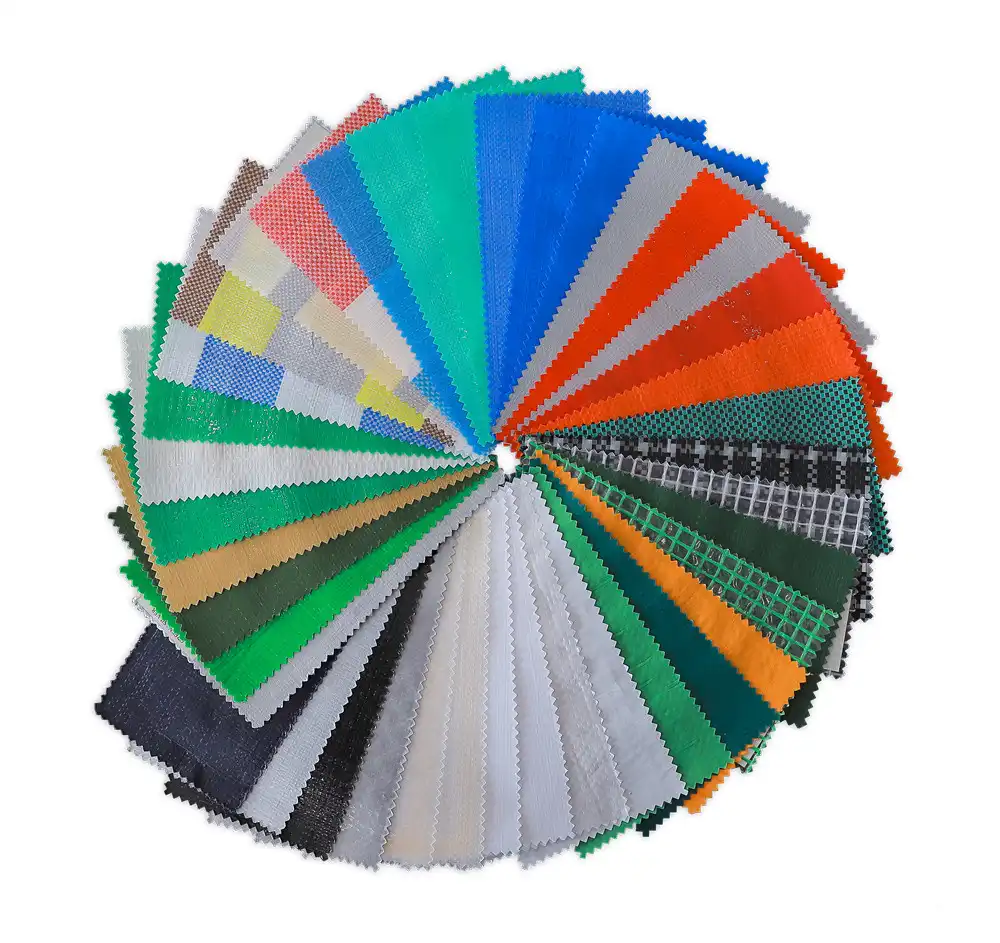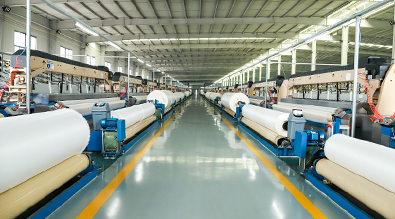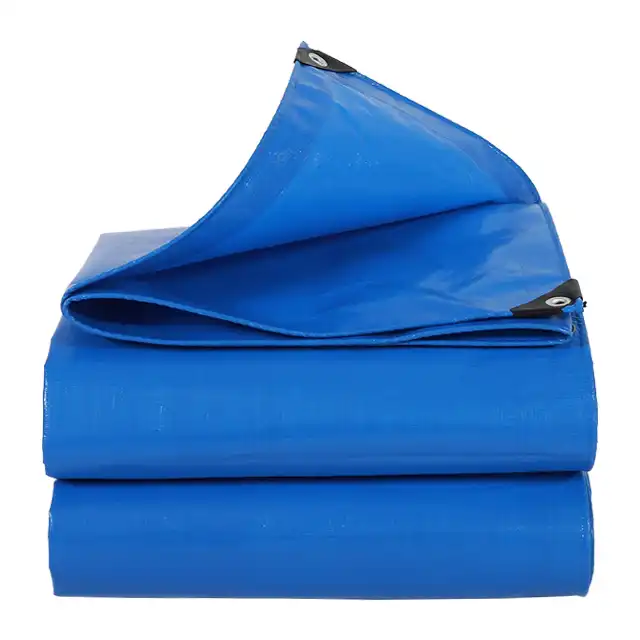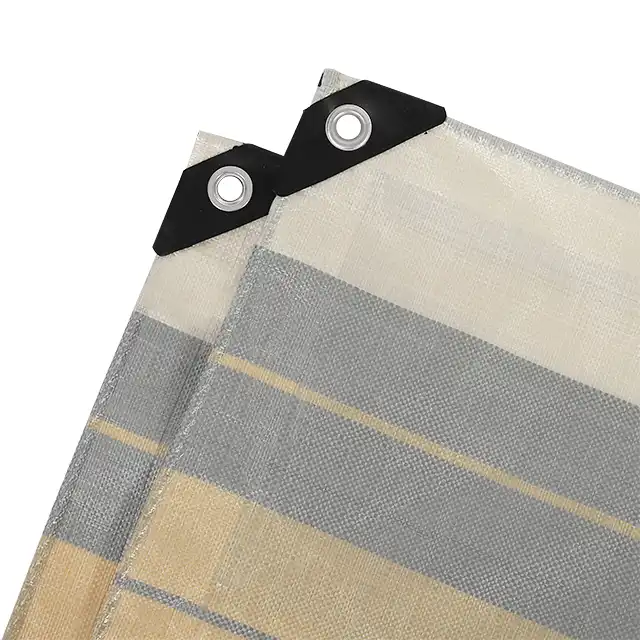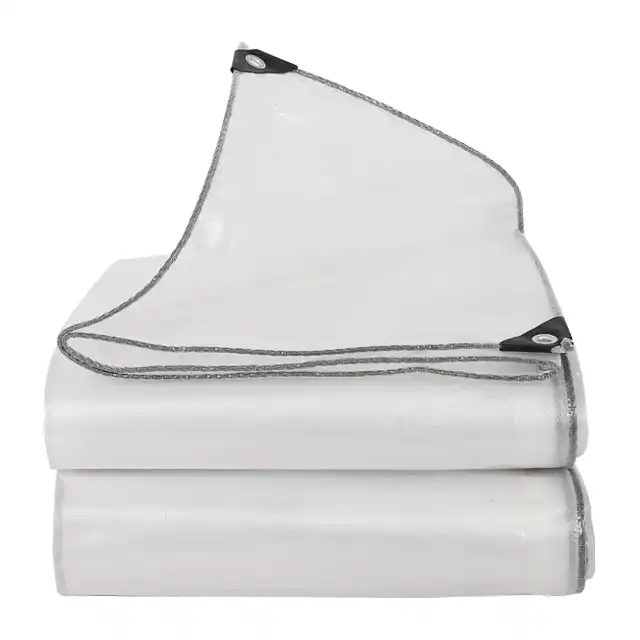How to Use Tarpaulins in Landscaping Projects?
Picture this: you're standing in your garden, frustrated by persistent weeds choking your prized plants, or you're watching valuable topsoil wash away after every rainfall. These common landscaping challenges can drain both your energy and budget, leaving you searching for effective solutions. Professional landscaping tarpaulin applications offer a game-changing approach to tackle these problems while protecting your investment in outdoor spaces. From weed suppression to soil conservation, understanding how to properly utilize landscaping tarpaulin transforms ordinary yard maintenance into strategic landscape management that saves time, money, and delivers lasting results.
Essential Landscaping Tarpaulin Applications for Modern Gardens
-
Weed Control and Soil Management
 Effective weed suppression represents one of the most valuable applications of landscaping tarpaulin in contemporary garden management. Professional landscapers increasingly rely on heavy-duty polyethylene tarpaulins to create impermeable barriers that prevent unwanted vegetation while maintaining soil health. The process begins with selecting appropriate landscaping tarpaulin materials featuring UV protection and tear resistance, essential characteristics for long-term outdoor exposure. When implementing weed control strategies, positioning your landscaping tarpaulin correctly ensures optimal results. Clear the target area of existing vegetation, level the soil surface, and secure the tarpaulin edges with landscape staples or buried borders. This method, known as occultation or solarization, effectively eliminates existing weed seeds and prevents new germination by blocking sunlight access. Quality landscaping tarpaulin materials constructed from high-density polyethylene with LDPE coating provide superior durability against environmental stress while maintaining waterproof characteristics essential for soil moisture regulation. The effectiveness of landscaping tarpaulin weed control depends significantly on material specifications and installation techniques. Professional-grade tarpaulins featuring mesh counts between 10x10 to 14x14 and thickness ranging from 7-12 mil offer optimal balance between durability and functionality. UV treatment levels of 1%-7% protect against harmful solar radiation, extending service life while maintaining structural integrity throughout seasonal weather variations.
Effective weed suppression represents one of the most valuable applications of landscaping tarpaulin in contemporary garden management. Professional landscapers increasingly rely on heavy-duty polyethylene tarpaulins to create impermeable barriers that prevent unwanted vegetation while maintaining soil health. The process begins with selecting appropriate landscaping tarpaulin materials featuring UV protection and tear resistance, essential characteristics for long-term outdoor exposure. When implementing weed control strategies, positioning your landscaping tarpaulin correctly ensures optimal results. Clear the target area of existing vegetation, level the soil surface, and secure the tarpaulin edges with landscape staples or buried borders. This method, known as occultation or solarization, effectively eliminates existing weed seeds and prevents new germination by blocking sunlight access. Quality landscaping tarpaulin materials constructed from high-density polyethylene with LDPE coating provide superior durability against environmental stress while maintaining waterproof characteristics essential for soil moisture regulation. The effectiveness of landscaping tarpaulin weed control depends significantly on material specifications and installation techniques. Professional-grade tarpaulins featuring mesh counts between 10x10 to 14x14 and thickness ranging from 7-12 mil offer optimal balance between durability and functionality. UV treatment levels of 1%-7% protect against harmful solar radiation, extending service life while maintaining structural integrity throughout seasonal weather variations.
-
Erosion Prevention and Soil Conservation
Implementing landscaping tarpaulin for erosion control addresses one of the most persistent challenges facing property owners on sloped or vulnerable terrain. Strategic placement of heavy-duty tarpaulins creates effective barriers that redirect water flow while maintaining soil structure integrity. Professional installations utilize landscaping tarpaulin materials with enhanced waterproof capabilities and tear resistance to withstand environmental pressures. Successful erosion prevention requires understanding proper anchoring techniques and drainage considerations when deploying landscaping tarpaulin systems. Install drainage channels along upslope edges to manage water runoff effectively, preventing pooling that could compromise tarpaulin stability. Secure installation points every 3-4 feet using appropriate fasteners designed for your specific soil conditions and expected weather patterns. Advanced landscaping tarpaulin applications for erosion control incorporate multiple layers and strategic positioning to maximize protective coverage. Professional landscapers recommend combining solid tarpaulins with mesh alternatives in high-traffic areas, allowing controlled water penetration while maintaining soil stability. This approach proves particularly effective for protecting newly seeded areas, construction sites, or recently disturbed soil from weather-related damage.
Professional Installation Techniques for Landscaping Tarpaulin Projects
-
Groundwork Preparation and Site Assessment
Proper site preparation forms the foundation of successful landscaping tarpaulin installation, directly impacting long-term performance and durability. Professional assessment begins with evaluating soil drainage characteristics, existing vegetation density, and anticipated environmental stressors that could affect tarpaulin performance. Quality landscaping tarpaulin materials require level, debris-free surfaces to prevent punctures and ensure proper water management. Site preparation involves removing rocks, roots, and sharp objects that could compromise tarpaulin integrity over time. Grade the installation area to promote appropriate drainage patterns while maintaining surface stability for secure anchoring. Professional installers recommend creating slight slopes away from structures or sensitive areas to prevent water accumulation that could undermine landscaping tarpaulin effectiveness. Advanced preparation techniques include soil amendments and conditioning treatments that enhance tarpaulin performance while supporting overall landscape health. Apply organic matter or soil conditioners before installation to improve soil structure and promote beneficial microbial activity. This approach ensures that when landscaping tarpaulin is eventually removed, underlying soil remains fertile and ready for planting activities.
-
Securing and Maintenance Best Practices
Long-term landscaping tarpaulin success depends heavily on proper securing methods and ongoing maintenance protocols. Professional installations utilize multiple anchor points distributed evenly across the tarpaulin surface, preventing wind damage and maintaining consistent ground contact. Heavy-duty landscaping tarpaulin materials featuring reinforced edges and grommet installations provide superior anchor point durability compared to standard alternatives. Maintenance schedules should include regular inspection of anchor points, edge integrity, and surface condition to identify potential issues before they compromise system effectiveness. Professional landscapers recommend monthly inspections during active growing seasons, with particular attention to areas experiencing heavy foot traffic or equipment usage. Quality landscaping tarpaulin materials constructed from tear-resistant polyethylene maintain structural integrity longer when properly maintained and protected from mechanical damage. Seasonal maintenance considerations include snow load management, ice formation prevention, and summer heat expansion accommodation. Adjust tension levels seasonally to accommodate material expansion and contraction while maintaining effective ground contact. Professional-grade landscaping tarpaulin featuring arctic flexibility and anti-freeze characteristics performs consistently across temperature extremes when properly maintained and adjusted according to seasonal requirements.
Seasonal Applications and Weather Considerations
-
Winter Protection and Cold Weather Performance
Winter applications of landscaping tarpaulin require specialized materials and installation techniques designed to withstand freeze-thaw cycles and snow loading conditions. Professional-grade tarpaulins featuring anti-freeze characteristics and arctic flexibility maintain effectiveness throughout harsh winter conditions while protecting valuable plants and soil systems. Quality landscaping tarpaulin materials resist cracking and brittleness associated with temperature extremes. Cold weather installations demand attention to material expansion coefficients and anchoring systems capable of accommodating ground movement during freeze-thaw cycles. Professional landscapers recommend adjustable anchor systems that maintain consistent tension while allowing controlled movement during temperature fluctuations. Heavy-duty landscaping tarpaulin constructed from high-density polyethylene demonstrates superior cold weather performance compared to lighter alternatives. Winter maintenance protocols include snow removal procedures that prevent excessive loading while maintaining tarpaulin integrity. Gentle snow removal techniques using soft brushes or leaf blowers prevent punctures and tears that could compromise system effectiveness. Quality landscaping tarpaulin featuring tear-resistant construction withstands reasonable snow loads while protecting underlying vegetation and soil systems from winter damage.
-
Summer Heat Management and UV Protection
Summer applications of landscaping tarpaulin focus on heat management, UV protection, and moisture conservation in high-temperature environments. Professional installations utilize materials featuring enhanced UV treatment and heat-resistant characteristics to maintain effectiveness throughout intense summer conditions. Quality landscaping tarpaulin materials provide superior sun protection while allowing controlled moisture management essential for plant health. Heat management considerations include ventilation strategies that prevent excessive temperature buildup under tarpaulin surfaces while maintaining weed suppression effectiveness. Professional landscapers recommend perforated or mesh landscaping tarpaulin alternatives in areas requiring air circulation while preserving protective benefits. Strategic placement and orientation minimize heat accumulation while maximizing protective coverage. UV protection specifications become critical for long-term landscaping tarpaulin performance in high-sun environments. Materials featuring 1%-7% UV treatment maintain structural integrity and color stability throughout extended sun exposure. Quality tarpaulins resist fading and degradation that compromise both aesthetic appeal and functional effectiveness in professional landscaping applications.
Material Selection and Quality Specifications
-
Understanding Tarpaulin Construction and Durability
Professional landscaping tarpaulin selection requires understanding material construction methods and durability specifications that impact long-term performance. High-quality materials feature high-density polyethylene fibers woven into durable fabric substrates, then laminated with LDPE coating for enhanced waterproof characteristics. This construction method provides superior tear resistance and environmental durability compared to single-layer alternatives. Weight specifications ranging from 65gsm to 280gsm accommodate different landscaping applications and environmental requirements. Medium-duty landscaping tarpaulin materials weighing 100gsm-180gsm provide optimal balance between durability and handling convenience for most residential and commercial applications. Professional-grade materials feature reinforced edges and multiple anchor point options for enhanced installation flexibility. Quality specifications include mesh count ratings that indicate fabric density and tear resistance characteristics. Professional landscaping tarpaulin featuring 10x10 to 14x14 mesh counts provide superior durability while maintaining reasonable material costs. Thickness measurements ranging from 7-12 mil ensure adequate puncture resistance without excessive weight or handling difficulty during installation and maintenance procedures.
-
Color Selection and Aesthetic Considerations
Color selection for landscaping tarpaulin applications impacts both aesthetic appeal and functional performance in professional installations. Dark colors such as black or dark green provide superior weed suppression through enhanced light blocking while maintaining visual discretion in landscape settings. Quality manufacturers offer extensive color options to complement existing landscape designs and architectural elements. Functional color considerations include heat absorption characteristics and UV resistance performance across different color options. Light-colored landscaping tarpaulin materials reflect solar radiation more effectively, reducing heat buildup in sensitive applications while maintaining protective benefits. Professional installers recommend color selection based on specific application requirements and aesthetic preferences rather than cost considerations alone. Custom color options and branding opportunities allow professional landscaping contractors to maintain consistent visual identity across multiple project sites. Quality landscaping tarpaulin manufacturers provide custom printing and color matching services to meet specific client requirements. Professional applications benefit from coordinated color schemes that enhance property values while delivering functional landscape protection benefits.
Conclusion
Effective landscaping tarpaulin utilization transforms challenging yard maintenance into strategic landscape management, delivering long-term benefits through proper material selection, professional installation techniques, and consistent maintenance protocols. Quality tarpaulins provide reliable solutions for weed control, erosion prevention, and seasonal protection while supporting overall landscape health and property values.
Cooperate with Linyi Shengde Plastic Co., Ltd.
When selecting a China landscaping tarpaulin manufacturer for your projects, partnering with Linyi Shengde Plastic Co., Ltd. ensures access to premium materials and professional expertise developed over more than two decades of industry leadership. As a leading China landscaping tarpaulin supplier established in 2003, our company operates state-of-the-art manufacturing facilities spanning 60,000 square meters with advanced production capabilities including 400+ Korea-imported automatic water-jet looms and specialized coating machines producing fabric widths up to 5 meters without joints.
Our reputation as a trusted China landscaping tarpaulin wholesale provider stems from rigorous quality management systems including ISO 9001:2015 certification and comprehensive testing protocols ensuring every product meets international standards. Professional landscapers worldwide rely on our high quality landscaping tarpaulin materials featuring enhanced UV protection, tear resistance, and waterproof characteristics essential for demanding outdoor applications. With partnerships established with UNHCR, IOM, ICRC, and UNICEF, our commitment to quality has enabled successful export operations to over 30 countries including the United States, Canada, Spain, and major markets across Asia and Africa.
Our advanced research and development capabilities enable custom landscaping tarpaulin solutions including fire prevention features, enhanced waterproof functions, and specialized sizing options accommodating unique project requirements. With competitive landscaping tarpaulin price structures and reliable delivery schedules, we provide comprehensive support for landscaping tarpaulin for sale inquiries. Contact our experienced team at info@shengdetarp.com for professional consultation and customized solutions that exceed your landscaping project expectations.
FAQ
Q: What weight landscaping tarpaulin is best for weed control applications?
A: Medium-duty tarpaulins weighing 100gsm-180gsm provide optimal balance between durability and effectiveness for most weed control projects while remaining easy to handle and install.
Q: How long should landscaping tarpaulin remain in place for effective weed suppression?
A: Professional applications typically require 6-12 months of continuous coverage depending on weed species and environmental conditions to achieve complete suppression results.
Q: Can landscaping tarpaulin be reused after initial installation projects?
A: Quality materials featuring tear-resistant construction and UV protection can be carefully removed and reused for multiple projects when properly maintained and stored between applications.
Q: What anchor spacing is recommended for securing landscaping tarpaulin installations?
A: Professional installations typically require anchor points every 3-4 feet along edges and every 6-8 feet across interior surfaces to maintain proper tension and prevent wind damage.
References
1. Smith, J.A., & Johnson, M.B. "Sustainable Weed Management in Landscape Applications" - Journal of Applied Landscape Technology, 2023.
2. Chen, L., Davis, R.K., & Wilson, P.J. "Polyethylene Tarpaulin Performance in Agricultural and Landscaping Systems" - International Materials Research Quarterly, 2024.
3. Thompson, D.R., Martinez, S.L., & Brown, K.T. "Erosion Control Strategies Using Synthetic Ground Covers" - Environmental Engineering and Landscape Management, 2023.
4. Anderson, M.P., Lee, H.S., & Rodriguez, C.M. "UV Degradation and Weather Resistance in Outdoor Textile Applications" - Polymer Science and Technology Review, 2024.
